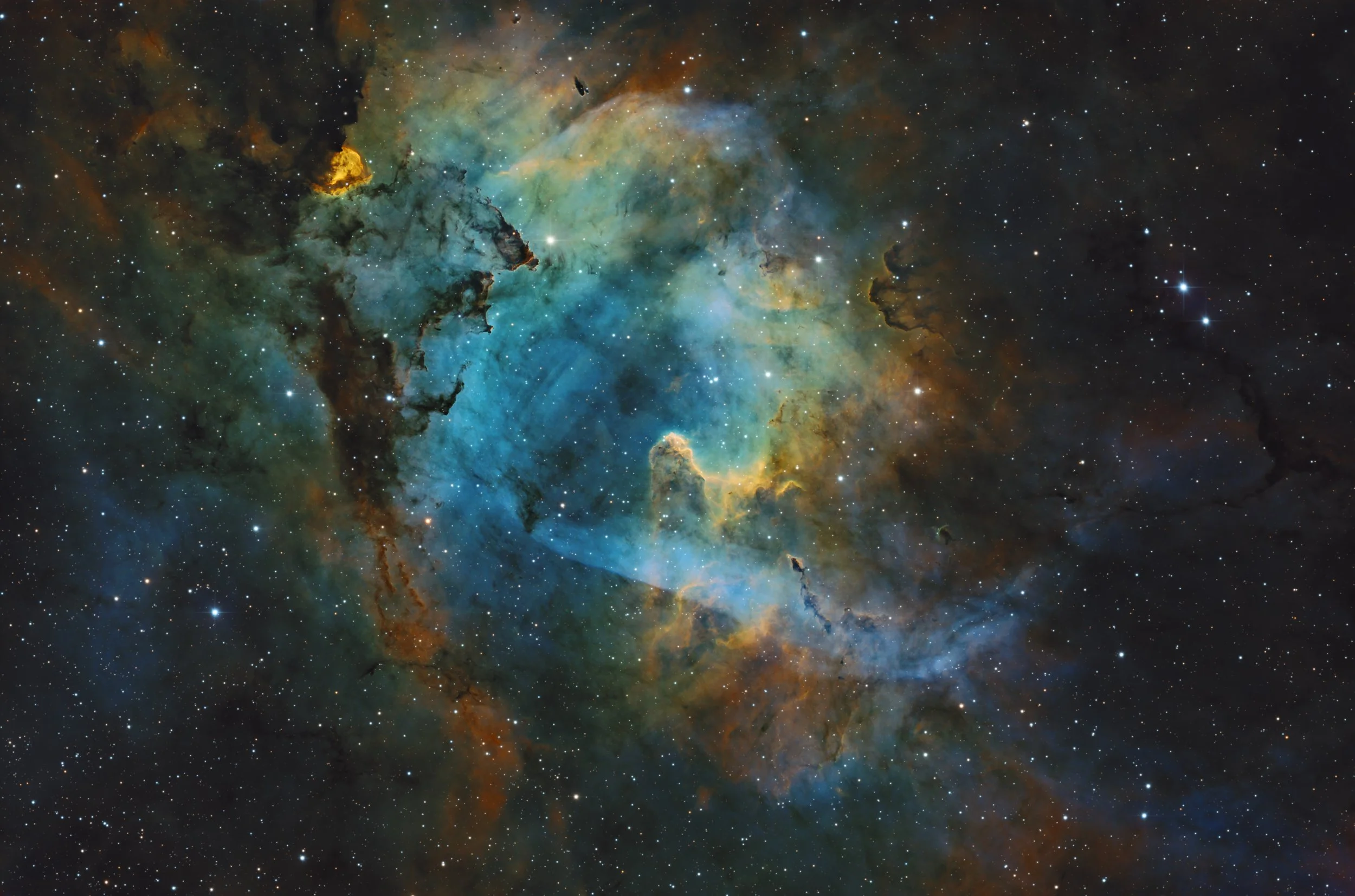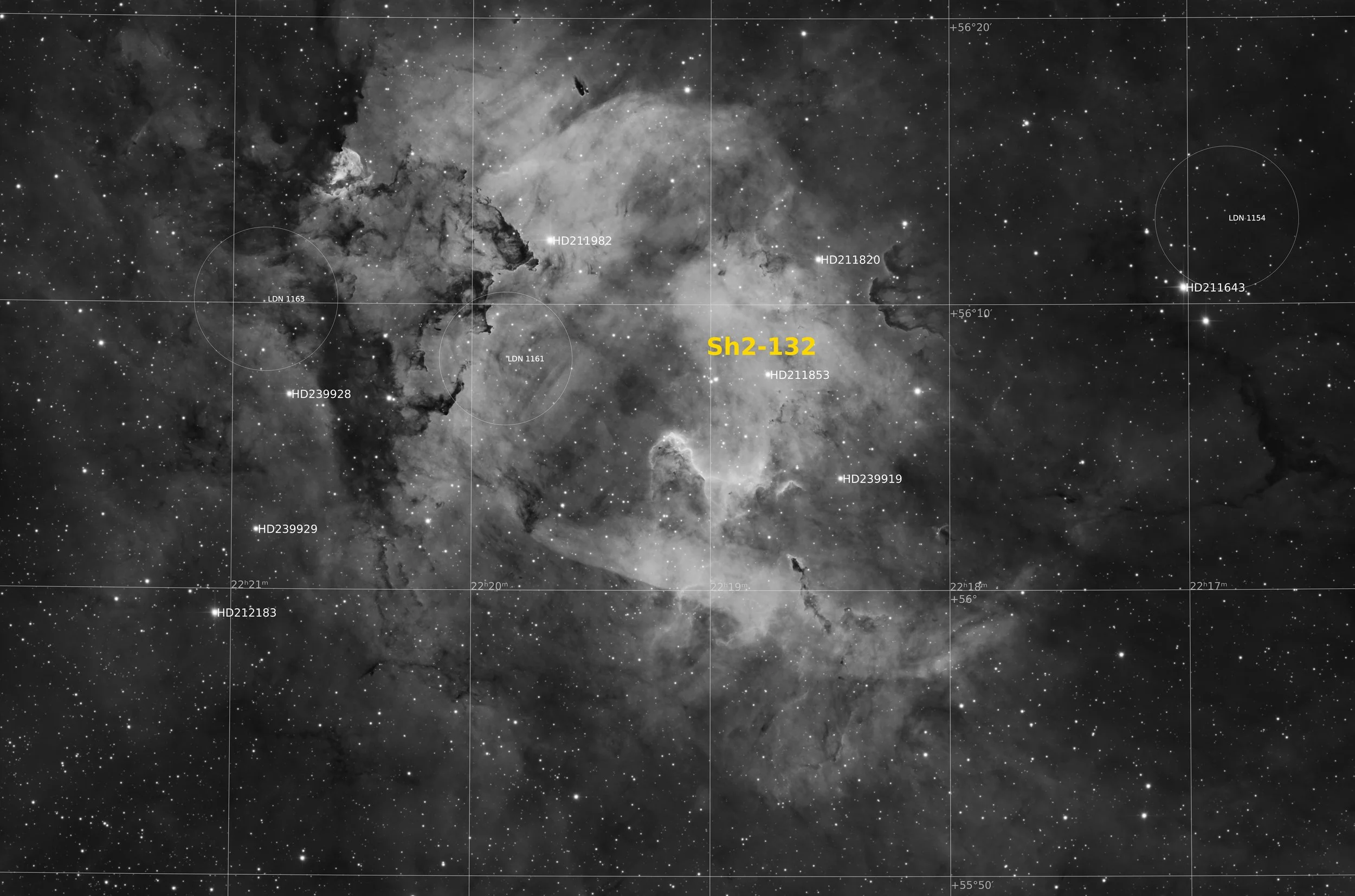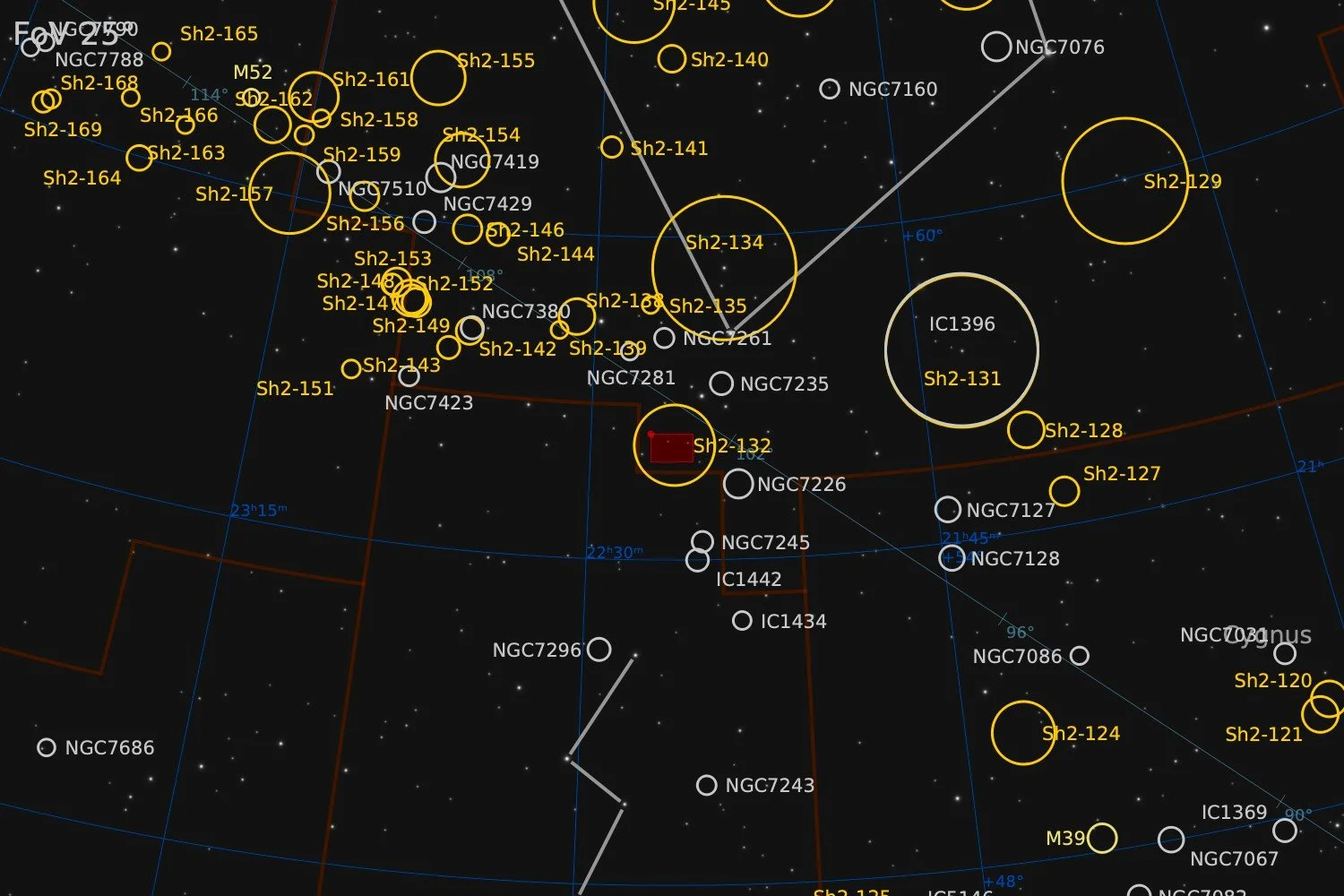Sh2-132
Lion Nebula
47’ x 31’ | 0.3”/px | 9432 × 6236 px | full resolution
Cepheus
RA 22h 19m Dec 56° 04’ | 0°



Sh2-132, also known as the Lion Nebula, is an emission nebula situated in the constellation Cepheus. This nebula is classified as an H II region, indicating a cloud of ionized hydrogen gas where star formation is active. Sh2-132 is closely associated with the star cluster Berkeley 94, which contains several O-type stars—among the most massive and luminous known. These stars are responsible for ionizing the surrounding gas, causing the nebula to emit light. The nebula spans approximately 150 light-years and is located at an estimated distance of 10,400 light-years from Earth. Its structure features intricate filaments and patches of glowing gas, typical of regions where stellar winds and ultraviolet radiation interact with the surrounding interstellar medium. Some studies suggest that parts of Sh2-132 may be associated with a supernova remnant.
source: Mistral.ai
Data Acquisition
Data was collected over 9 nights during August 2025, using a 14” reflector telescope with full-frame camera at the remote observatory in Spain. Narrowband filters (Ha, OIII and SII, all 3nm) were used to gather the data. A total of approximately 24 hours of data was combined to create the final image.
Location Remote hosting facility IC Astronomy in Oria, Spain (37°N 2°W)
Sessions
Frames
Equipment
Telescope
Mount
Camera
Filters
Guiding
Accessoires
Software
Planewave CDK14 (2563mm @ f/7.2), Optec Gemini Rotating focuser
10Micron GM2000HPS, custom pier
Moravian C3-61000 Pro (full frame), cooled to -10 ºC
Chroma 2” Ha, OIII, SII (3nm) unmounted, Moravian filterwheel L, 7-position
Unguided
Compulab Tensor I-22, Dragonfly, Pegasus Ultimate Powerbox v2
Voyager Advanced, Viking, Mountwizzard4, Astroplanner, PixInsight 1.9.3
Processing
All processing was done in Pixsinsight unless stated otherwise. Default features were enhanced using scripts and tools from RC-Astro, SetiAstro, GraXpert, CosmicPhotons and others. Images were calibrated using 50 Darks, 50 Flats, and 50 Flat-Darks, registered and integrated using WeightedBatchPreProcessing (WBPP). The processing workflow diagram below outlines the steps taken to create the final image.
As with all SHO images using the Hubble palette, the final look and feel is very much a matter of taste and artistic freedom of the one who is processing the image. Especially during the NarrowbandNormalization process, the colours can be pushed around really hard. In this case I decided to leave quite a bit of green in the image. One school of thought might be that there is no green in the universe, so it should be eliminated. On the other hand, by its very nature the Hubble palette assigns the most prominent signal (Ha) to the green channel. In the balancing of colours a deliberate attempt was made to maintain both the warm autumn-like colours blended smoothly with the greens and the blues.
There are some darker areas in the blue center of the nebula. These were emphasised ever so slightly by applying a bit more contrast in the lower brightness areas of the blue parts of the image, using a mask targeting the blues.
The rest of the editing followed a pretty standard processing workflow.
Processing workflow (click to enlarge)
This image has been published on Astrobin.
